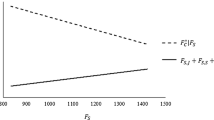Abstract
The intergovernmental United Nations Conference on Highly Migratory and Straddling Stocks, initiated in 1993 and finished in 1995, addressed the conservation and management of fishery resources located both within the coastal state 200 mile Exclusive Economic Zone (EEZ) and the adjacent high seas. These types of marine resources continue to be a source for international conflicts and debates. The original United Nations Law of the Sea of 1982 failed to address transboundary fisheries in a proper way. In particular, the agreement did not recognize the emergence of the complicated “straddling stock” issue. In the new United Nations Law of the Sea agreement of 1995, a consensus was reached that the management of the straddling and highly migratory fish stocks should be carried out through regional fisheries management organizations. We present a review of the straddling stock issues in the international agreement emerging from the negotiations within the United Nations. The review is contrasted with and clarified by game theoretic analyses. We also discuss one international fishery exemplifying the case, the Norwegian spring‐spawning herring. The main conclusion is that the local problems, faced during the stage of setting up regional fisheries organizations for the management of straddling and highly migratory fish stocks, are expected to be much more complicated and difficult to solve as compared to the cases of “shared fish stocks”. In the current paper, we present two reasons for this increased complexity. The first is the larger number of players as compared to the case of “shared fish stocks” and the second is the possibility of new members entering the regional fisheries organizations.
Similar content being viewed by others
References
J. Arin and V. Feltkamp, The nucleolus and kernel of veto-rich transferable utility games, International Journal of Game Theory 26 (1997) 61-73.
T. Bjørndal, A.D. Hole, W.M. Slinde, F. Asche and S. Reithe, Norwegian spring spawning herring-some biological and economic issues: An update, Foundation for Research in Economics and Business Administration, Working paper No. 46/1998, Bergen.
F.T. Christy and A.D. Scott, The Common Wealth in Ocean Fisheries (Johns Hopkins University Press, Baltimore, 1965).
C.W. Clark, Mathematical Bioeconomics: The Optimal Management of Renewable Resources (Wiley, New York, 1976).
C.W. Clark, Restricted access to common-property fishery resources: A game theoretic analysis, in: Dynamic Optimization and Mathematical Economics, ed. P. Liu (Plenum, New York, 1980) pp. 117-132.
R.D. Eckert, The Enclosure of Ocean Resources: Economics and the Law of the Sea (Hoover Institution Press, Stanford, 1979).
FAO Fisheries Department, Marine fisheries and the Law of the Sea: A decade of change, Special chapter (revised) of The State of Food and Agriculture 1992, FAO Fisheries Circular, No 853, FAO (1993).
V. Kaitala, Game theory models of dynamic bargaining and contracting in fisheries management, Systems Research Reports A11, Helsinki University of Technology, Institute of Mathematics (1985).
V. Kaitala, Game theory models in fisheries management-A survey, in: Dynamic Games and Applications in Economics, ed. T. Basar, Lecture Notes in Economics and Mathematical Systems (Springer, Berlin, 1986) pp. 252-266.
V. Kaitala, Nonuniqueness of no-memory feedback equilibria in a fishery resource game, Automatica 25 (1989) 587-592.
V. Kaitala and M. Lindroos, Sharing the benefits of cooperation in high seas fisheries: A characteristic function game approach, Natural Resource Modeling 11 (1998) 275-299.
V. Kaitala and G.R. Munro, The management of high seas fisheries, Marine Resource Economics 8 (1993) 313-329.
V. Kaitala and G.R. Munro, The economic management of high seas fishery resources: Some game theory aspects, in: Control and Game-Theoretic Models of the Environment, eds. C. Carraro and J.A. Filar, Annals of the International Society of Dynamics Games (Birkh¨auser, Boston, 1995) pp. 299-318.
V. Kaitala and G.R. Munro, The management of transboundary resources and property rights systems: The case of fisheries, in: Property Rights and the Environment. Social and Ecological Issues, eds. S. Hanna and M. Munasinghe (The Beijer International Institute of Ecological Economics and the World Bank, Washington, 1995) pp. 69-83.
V. Kaitala and G.R. Munro, The conservation and management of high seas fishery resources under the new law of the sea, Natural Resource Modeling 10 (1997) 87-108.
V. Kaitala and M. Pohjola, Optimal recovery of a shared resource stock: A differential game model with efficient memory equilibria, Natural Resource Modeling 3 (1988) 91-119.
M. Mesterton-Gibbons, Game-theoretic resource modeling, Natural Resource Modeling 7 (1993) 93-147.
G.R. Munro, The optimal management of transboundary fisheries: Game theoretic considerations, Natural Resource Modeling 4 (1990) 403-426.
G.R. Munro, The management of high seas fishery resources, in: Proceedings of the 7th IIFET Conference, Taipei (1994).
G.R. Munro and A.D. Scott, The economics of fisheries management, in: Handbook of Natural Resources and Energy Economics, Vol. II, eds. A.V. Kneese and J.L. Sweeney (North-Holland, Amsterdam, 1985) pp.623-76.
J. Nash, The bargaining problem, Econometrica 18 (1950) 155-162.
J. Nash, Noncooperative games, Annals of Mathematics 54 (1951) 289-295.
L. Shapley, A value for n-person games, in: The Shapley Value-Essays in Honor of Lloyd S. Shapley, ed. A.E. Roth (Cambridge University Press, Cambridge, 1988) pp. 31-40.
United Nations Convention of the Law of the Sea of 10 December 1982, UN Doc. A/Conf. 61/122, 1982.
United Nations Conference on Straddling Fish Stocks and Highly Migratory Fish Stocks. Agreement for the implementation of the provisions of the United Nations Convention of the Law of the Sea of 10 December 1982 relating the conservation and management of straddling fish stocks and highly migratory fish stocks, Sixth session, New York, 24 July-4 August, 1995. United Nations, A/CONF. 164/37, 8 September 1995.
Author information
Authors and Affiliations
Rights and permissions
About this article
Cite this article
Bjørndal, T., Kaitala, V., Lindroos, M. et al. The management of high seas fisheries. Annals of Operations Research 94, 183–196 (2000). https://doi.org/10.1023/A:1018925302021
Issue Date:
DOI: https://doi.org/10.1023/A:1018925302021




